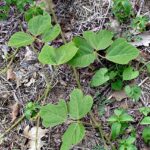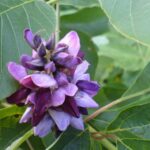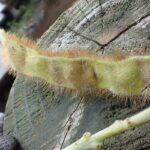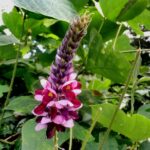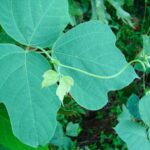On the Lookout for Non-Native Invasive Plants: Kudzu
go.ncsu.edu/readext?1091216
en Español / em Português
El inglés es el idioma de control de esta página. En la medida en que haya algún conflicto entre la traducción al inglés y la traducción, el inglés prevalece.
Al hacer clic en el enlace de traducción se activa un servicio de traducción gratuito para convertir la página al español. Al igual que con cualquier traducción por Internet, la conversión no es sensible al contexto y puede que no traduzca el texto en su significado original. NC State Extension no garantiza la exactitud del texto traducido. Por favor, tenga en cuenta que algunas aplicaciones y/o servicios pueden no funcionar como se espera cuando se traducen.
Português
Inglês é o idioma de controle desta página. Na medida que haja algum conflito entre o texto original em Inglês e a tradução, o Inglês prevalece.
Ao clicar no link de tradução, um serviço gratuito de tradução será ativado para converter a página para o Português. Como em qualquer tradução pela internet, a conversão não é sensivel ao contexto e pode não ocorrer a tradução para o significado orginal. O serviço de Extensão da Carolina do Norte (NC State Extension) não garante a exatidão do texto traduzido. Por favor, observe que algumas funções ou serviços podem não funcionar como esperado após a tradução.
English
English is the controlling language of this page. To the extent there is any conflict between the English text and the translation, English controls.
Clicking on the translation link activates a free translation service to convert the page to Spanish. As with any Internet translation, the conversion is not context-sensitive and may not translate the text to its original meaning. NC State Extension does not guarantee the accuracy of the translated text. Please note that some applications and/or services may not function as expected when translated.
Collapse ▲There are a wide variety of non-native invasive plant species that have taken hold in Madison County. These plants cause harm to the environment, as well as potential harm to human, animal, and plant health in the preexisting environment. Some of these damages can be caused by overtaking beneficial native plants in the ecosystem, act as vectors for diseases and other invasive species, such as invasive insects, and are unhealthy or potentially toxic to native animals. In this series, we will discuss identification and control of these prevalent invasive plants.
Identifying Kudzu
Kudzu (scientific name Pueraria montana) is a deciduous, perennial, and woody vine that can grow up to 100 feet in length that has spread across the southeast US. Originally from Asia, this vine was introduced in the United States in 1876 as an ornamental vine, and was subsequently introduced to farmers as a cheap source of forage for livestock. During the 1930s through the 1950s, planting kudzu was encouraged as a potential aid to control agricultural erosion, but by 1953 this practice was ended and removed from the USDA’s list of allowable cover plants. This plant begins as a young, hairy stem that grows at a rapid rate, in some cases even up to a foot a day, which becomes woody as it ages. The woody stems can reach up to 4 inches in diameter on established, mature vines. Kudzu has smooth, compound leaves over 6 inches in size made up of three broad leaflets ranging in color from true green, silvery greens, and yellow, where each individual leaflet can be up to 4 inches across, and each leaflet can have up to three lobes. It became a popular ornamental when it was first brought to America due to its large, fragrant flowers that appear when the kudzu vine is exposed to direct sunlight. The flowers are about 0.5-0.75 inches long with an irregular shape, and can range in color from light pink to purple, and usually bloom in the late summer to early fall. Throughout the fall, kudzu will produce a seed pod that appears flat and green, and is covered in abundant and erect long brown hairs. The seed pods are about 1.3 to 3 inches long, and only appear on climbing vines. Dense ground thickets of kudzu will not produce seed pods. The roots of kudzu are massive taproots, able to grow into fleshy and tuberous systems up to 7 inches in diameter and several feet long.
- Leaf and vine CameliaTWU CC BY-NC-ND 4.0 Image retrieved from NC Extension Gardener Plant Toolbox
- Flower DM CC BY-ND 4.0 Image retrieved from NC Extension Gardener Plant Toolbox
- Fruit Yamatsu CC0 Image retrieved from NC Extension Gardener Plant Toolbox
- Flower Kevin Schraer CC BY-NC 2.0 Image retrieved from NC Extension Gardener Plant Toolbox
- Leaf Martin LaBar CC BY-NC 2.0 Image retrieved from NC Extension Gardener Plant Toolbox
How It Spreads
By the 1970s, kudzu had spread so prolifically through the southeastern United States that it was listed as a common weed of the south in multiple settings. It has spread as far west as Texas and Oklahoma, and can now also be spotted spreading into northern states. This invasive species is extremely prolific, spreading itself through strong root systems created by underground stems known as rhizomes. These rhizomal root systems can cause structural damage to the foundation of homes, walls, and roads while allowing kudzu to grow in dense patches with rapid growth. This invasive plant also has the ability to create new root systems when nodes of the vine touch the ground, every contact with the soil creating a completely new plant. It continues to take over massive areas as it shades out trees and other native plants, killing them in the process. It can reproduce using its large, hairy seed pods, but this is to a much lower extent, as many of the seeds within the pods are not viable. Kudzu can grow in many varying environments, including various temperatures and soil types, but it reaches its highest growth rates in areas with mild winters, summer temperatures that regularly pass 80 degrees Fahrenheit, and areas that receive more than 40 inches of rainfall a year, but its large roots also allow it to tolerate heavy drought situations. These desired conditions have aided in the spread of kudzu throughout the Southeastern United States, spreading through disturbed areas like roadsides, forest edges, streambanks and other riverside areas that receive plenty of sunlight.
Controlling Kudzu
The most effective methods for controlling kudzu is variable depending on the size of the infestation. If the infestation is just beginning, in small patches before its large root systems have time to establish themselves well, kudzu can be controlled by hand-pulling, mowing, or animal grazing in various environments throughout the growing season. This method can also be attempted on large stands, but if the stand is well established, it will likely not kill the root systems of the larger plants.
For these more established kudzu infestations, oftentimes chemical control is necessary to remove it from the environment it has overtaken. There are several different methods that can be used to control various types of infestations. The first method is used for more selective control of kudzu that has grown into woody vines in the tree canopies, and is known as the cut-stump method. This method involves cutting the vines off as close to the ground as possible, and then immediately after cutting, spray the revealed stump with a solution of 50% triclopyr. Be sure the stump is sprayed within three minutes of being cut, as the turgor pressure from the plant’s vascular system will help draw the chemical into the root systems for a more effective kill. Turgor pressure is caused by the pressure of water within the plant cells that allows the plant to keep its upright and rigid structure, as well as aiding in the flow of nutrients across the expanse of the plant, from the tips of the leaves to the ends of the roots underground. The cut-stump method is a viable method of chemical control for these viney kudzu plants as long as the ground is not frozen, allowing for it to be used throughout most of the year in our region.
Large infestations that may require a less selective method of chemical control can often be treated using a foliar spray. A solution of 2-3% triclopyr (a selective herbicide which targets woody and broadleaf plants) mixed with 0.5% non-ionic surfactant to help the herbicide stick to the surface of the kudzu’s leaves for a better absorption rate can be used to spray in a foliar treatment of this invasive. A 2-3% solution of glyphosate (a non-selective herbicide) can also be used with a 0.5% surfactant to treat heavy infestations of kudzu, but this will also harm or kill any other plants present in the area, so only use this method with glyphosate if there are no desirable plants left in the area. When using this method, make sure the leaves of the kudzu are thoroughly coated in the solution, and that you use this method when temperatures are above 65 degrees, or else the effectiveness of the treatment may suffer. Once ground cover dies back, the foliar treatment can be followed up by digging and cutting the central root crown, and spraying the wound made with a 50% triclopyr or glyphosate solution to kill the root systems.
No matter what treatment is used, or the types of infestations they are used on, make sure the previously infested areas are monitored for any potential regrowth so it can be controlled before it establishes itself strongly again.
If you have any other questions about identifying or controlling kudzu, please contact the N.C. Cooperative Extension, Madison County Center at (828) 649-2411, or reach out to me directly at peyton_duckett@ncsu.edu.
Citations
Invasive Species Leaflet. (2010, March). NCDA&CS, Forest Service Division.
North Carolina State University. (n.d.). Pueraria montana var lobata. North Carolina Extension Gardener Plant Toolbox.




